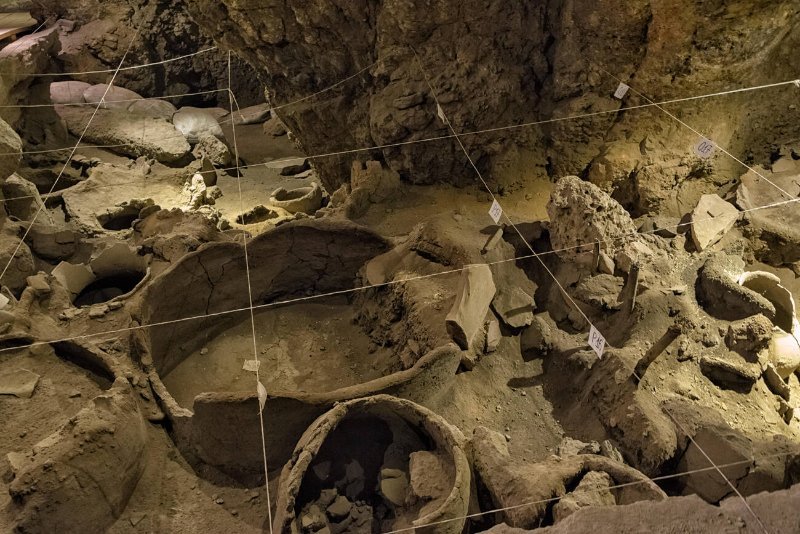Located in Vayots Dzor Province near the village, Areni Cave-1 is one of Armenia’s most significant archaeological sites. This prehistoric cave complex, also known as Birds’ Cave, lies along the Arpa River and holds some of the most remarkable discoveries in human history.
Groundbreaking Archaeological Finds

Areni Cave has revealed astonishing artifacts dating back thousands of years. Key discoveries include:
- The World’s Oldest Leather Shoe (2010): A 5,500-year-old leather shoe, well-preserved in the cave’s stable conditions.
- The World’s Oldest Known Winery (2011): Excavations uncovered a wine press, fermentation vats, and grape remains, proving ancient Armenians practiced winemaking over 6,000 years ago.
- A Skirt from 3900 BCE: A woven women’s skirt, one of the oldest pieces of clothing ever found.
Location and Structure of Areni Cave-1

The cave sits 12 km from Yeghegnadzor, in the Arpa River Valley. It consists of three chambers and spans approximately 500-600 square meters. While much of the site remains unexplored, experts believe further excavations could unveil more historical treasures.
The Surrounding Environment Around Areni Cave-1

Areni Cave is located in a breathtaking natural setting, surrounded by rugged limestone cliffs and lush vineyards. The Arpa River flows nearby, providing a picturesque backdrop and contributing to the region’s rich agricultural history. The area is known for its mild climate, making it an ideal location for wine making for thousands of years. The nearby Noravank Monastery and other cultural landmarks add to the historical significance of the region, making it a perfect destination for history and nature enthusiasts alike.
The Ancient Wine Making Legacy

Excavations have confirmed Areni’s Cave as the world’s oldest-known wine making site. Researchers discovered:
- A grape press with a special inclined surface designed for juice extraction.
- Large buried clay vessels (karas) containing grape residue.
- Grape seeds and vines, offering insights into ancient viticulture techniques.
According to historians, Armenian wine making traditions were even documented in ancient texts, including the works of Xenophon. His accounts describe how locals stored and consumed wine from clay jars buried underground, a practice still seen in parts of Armenia today.
Artifacts and Cultural Significance of Areni Cave-1

Aside from its wine making history, Areni Cave has yielded various artifacts reflecting daily life, craftsmanship, and ritual practices. Excavations uncovered pottery shards, woven materials, wooden tools, and bone instruments, showcasing the advanced skills of early Armenian societies. These findings indicate that the region was a cultural and economic hub thousands of years ago, playing a significant role in the development of ancient civilization.
Rituals and Mysterious Practices
Evidence suggests that the cave was not a residential area, but rather a site for ritualistic ceremonies. Findings indicate:
- Human remains buried in ceramic jars.
- Three skulls of teenage girls, showing signs of sacrificial rituals.
- Signs of early religious ceremonies connected to fertility and agriculture.
Archaeologists believe these rituals reflect ancient spiritual beliefs, possibly linked to Mesopotamian and Egyptian temple traditions.
Plan Your Trip with Armenic Tours
Discover Areni Cave with Armenic Tours, your expert guide to Armenia’s historical and cultural treasures. Join to one of our groups and experience one of the world’s most fascinating archaeological sites.
Conclusion
Areni Cave stands as a testament to Armenia’s rich history and cultural heritage. From the world’s oldest known winery to prehistoric artifacts, this site provides invaluable insights into early human civilization. Whether you are passionate about archaeology, history, or wine making, Areni Cave offers a unique glimpse into the past, making it an essential destination for travelers exploring Armenia.





